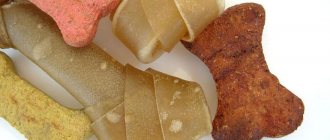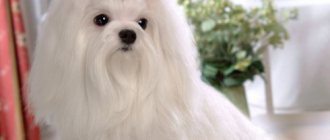History of the breed
The continental toy spaniel is native to both Belgium and France.
According to documents, it is believed that Phalene was developed in the nineteenth century. But in fact, the first mentions of these decorative dogs date back to the eleventh century.
Regarding the ancestors of the continental dwarf spaniel, there is no 100% accurate information. There are suggestions that the Phalene originated from the famous Belgian breed “Epañol-Nen”.
The Continental Toy Spaniel is a pet of aristocrats and rich people. In the distant past, hundreds of years ago, poor peasants and even people with average incomes could not afford to purchase and maintain phalene.
Only rich people belonging to high society had in their homes pets of the Toy Spaniel breed with a fabulous appearance.
The small, graceful phalen is not intended for work. His duties were and are only to amuse and delight the owners with his cheerful disposition and playfulness.
Although, it is worth noting that there was a time when the phalen was used as a rat hunter. But this period did not last long. After him, the toy spaniel is known exclusively as a decorative lap dog.
History of the origin of the breed
The Papillon dog breed is often called the French Papillon, and because of the similarity of their ears to the wings of an elegant insect - butterflies and Papillon moths. This decorative feature became the main reason for further improving the breed and giving it a modern look.
The first written mention of small dogs with erect fluffy ears, similar to butterflies, is about 800 years old. At that time, Papillons were called Continental Toy Spaniels. In a very short time the breed received its current name. At the same time, phalenas were identified, the difference of which was not erect, but hanging ears.
It was impossible to determine the exact time of the birth of the breed. Experts identify 2 most likely versions.
According to the first of them, papillons appeared in the 11th century. This can be evidenced by the fact that Duke Gottfried from Lower Lorraine, during the crusade, brought with him to Jerusalem an unusual dwarf dog with fluffy erect ears, reminiscent of the open wings of a butterfly.
According to the second version, the breed in a form close to the modern one appeared only in the 14th century; and dogs similar in appearance to them, which were known earlier, are their ancestors.
Butterflies belong to the royal dogs. It is believed that the King of France, Henry III, was so captivated by the appearance of the Papillons that he spent a significant part of his treasury on their purchase and maintenance. However, there is no official confirmation of this.
There is also a legend that one of Henry III’s favorites tried to warn him that a monk who came to the king was planning an assassination attempt. The dog began to bark so loudly at the guest that it had to be taken to another room. Her behavior was not understood, and the assassination attempt was carried out.
The French monarchs Louis X1V, Louis XV and Louis XVI also turned out to be big fans of Papillons. Marie Antoinette and the Marquise de Pompadour were also not indifferent to the breed. Thanks to this, butterfly dogs became extremely fashionable among the nobility, which had a positive effect on the improvement of their decorative appearance. For a long time, Papillons were called “the lap dog of queens and kings.” Owners took animals with them to receptions and balls, and exquisite pets were often depicted in portraits.
At the end of the 19th century, the breed was brought to America, and from the 20th century, British dog breeders became interested in Papillons and began work on improving the dog’s appearance to bring it to the ideal. For this purpose, the Papillon was crossed with the Spitz. This mixture had a positive effect on the breed: its coat became fluffier and longer, and its tail took on a more striking position. Official breed standards have been approved since 1934, and today Papillon dogs are bred whose description meets these requirements.
Breed standard
The Continental Toy Spaniel Phalene is a small toy breed. It is harmoniously composed. His physique is elongated and strong.
The weight of an adult phalen is 2.5-5 kg. , height about 28 cm .
A small, rounded head rests on a neck that is not too long, dry, and without dewlap. The forehead is convex.
The ears are a distinctive feature of the Phalene breed. They are hanging, very beautiful, reminiscent of the folded wings of a moth. A fringe of long decorating hair is required.
The eyes are dark and large. The shape is round, almond-shaped. The look is lively, studying.
The stop is pronounced. The muzzle tapers towards the end of the nose. The nose is not large and black.
Scissor bite. The teeth are sharp. The lips are dense, thin, not drooping.
The topline is level. The back is straight. The chest is slightly flat and deep on the sides. The abdomen is moderately tucked. The tail is long, carried over the back, like a squirrel's, and heavily pubescent. He has a beautiful plume of fringe.
The limbs are relatively short, thin, and even. Paws are elongated, “hare-shaped.”
The coat of the Phalene is of medium length, thick, slightly wavy. The fur is silky to the touch. There is long decorative hair on the ears, limbs and tail.
Two-color and tricolor colors are allowed. In any case, the background main color is white. It has spots of different colors.
The most common and popular are black and white, white and sable, black and white and sable phalen.
Similar breeds:
- Cavalier King Charles Spaniel
- Papillon
Description of the breed
The breed is confused with a much more common breed - the long-haired Chihuahua, although the similarity between them is superficial. Despite the fact that they are classified as spaniels, most Papillons (especially those with erect ears) are similar to Spitz dogs.
Since this is a decorative breed, you should not expect large sizes from it. According to the breed standard, males at the withers reach 20–28 cm, females are the same. Dogs weight 3.6–4.5 kg. This is a well balanced dog and is almost square in size.
Compared to other toy breeds, it is stout and strong, but not stocky or fat. Dogs have a very long tail, which is held high and part of it lies on one side or another of the back.
The dog has a very expressive muzzle. The head is proportional to the body, slightly rounded. The muzzle is significantly narrower than the head, the stop is pronounced. The nose should be black, the eyes should be dark and of medium size. The expression in the eyes is attentive and intelligent.
The ears of both variations are very large, with rounded tips. In Papillon they are erect, in Phalene they are hanging, always with a fringe of long, slightly hanging hairs.
Despite the ears characteristic of the breed, they are also famous for their coat. These are dogs with long, silky hair that has no undercoat.
The coat is thick, straight, long on the chest. The shortest hair is on the head, muzzle, and front of the paws.
The ears and tail are well furred, sometimes creating an almost mischievous appearance. There are pants on the hind legs.
At one time these dogs were of various colors, then in 1920 single-color dogs came into fashion. Modern ones are distinguished by a white color, with spots of various colors. Spots of any color except blue are allowed.
The ears should be colored, ideal dogs have a white streak separating the muzzle, and the spots on either side of it are symmetrical. The location, size, shape of other spots on the body does not matter.
Maintenance and care
Phalene is absolutely not suitable for outdoor use. This is an indoor dog that requires comfort.
Representatives of the breed do not need much physical activity or daily walks.
But they love to walk, being in the fresh air and active games have a positive effect not only on health, but also on character and behavior.
When planning walks, the owner of a falen must take into account the fact that his pet does not tolerate heat very well.
Therefore, when going for a walk in the summer, be sure to take a bottle of water with you so that you can refresh your dog.
It is also not recommended to walk in strong sunshine. The ideal summer walk with your spaniel is in the morning and evening, when the heat subsides.
When placing such a pet in your home, make sure that its bed is located away from heating radiators. For such a small dog, you can install a whole house in the house with a mattress inside.
Phalen is very active and playful. Therefore, be sure to buy toys for him and do not leave him unattended for too long.
Such a pet can very quickly be trained to use a litter tray. He is smart and quick-witted, it is not difficult to teach him the rules of behavior in the house.
It is important to keep an eye on the appearance of the Continental Toy Spaniel. This is not difficult, since representatives of this breed are distinguished by their innate cleanliness and accuracy. The following procedures will be required:
- We comb the fur 3-4 times a week. During the shedding period, brushing is required once a day. This procedure is greatly simplified if you use a special spray.
- Haircut is carried out at the request of the owner. Hygienic grooming is recommended, but is not usually performed on show animals. You also need to regularly trim the hair growing between your toes.
- You don't need to bathe often. It is important to use detergents with caution, as phalen has very sensitive skin. A protein shampoo is recommended for this breed.
- We clean the ears and at the same time examine them weekly. Phalene often develops otitis media and infections due to lack of ventilation, because the ears are large, drooping and decorated with long hair. Therefore, it is important to clean them using a special product recommended by your veterinarian.
- We trim the claws as they grow.
- We wipe our eyes daily to remove secretions, usually in the morning.
- Phalene requires regular oral care. Inspections and weekly cleaning will be required. This breed is prone to tartar formation and dental diseases.
The beautiful appearance and health of a dog depends not only on care, but also on the quality of feeding. It must be balanced and of high quality.
You can feed Phalena with premium ready-made dry food designed for small breeds.
A natural method of feeding is also acceptable. In this case, the products must be of high quality and fresh. It is recommended to discuss the diet and daily intake with your veterinarian.
This is important because toy spaniels are prone to overeating. The gastrointestinal tract of phalena reacts sensitively to overfeeding, low-quality food, and changes in diet.
It is forbidden to treat your pet with food from the owner's table, and you should also not give him bones, sweets, citrus fruits, or foods with spices.
Don't forget about vitamin and mineral supplements, which are mandatory with natural feeding.
Puppies up to seven months of age are fed 4-7 times a day. Then we switch to twice a day feeding.
Be sure to make sure that the falen has constant access to clean, slightly cool water.
Continental Toy Spaniel (Papillon and Phalene)
Appearance
Continental Toy Spaniels (Papillon/Papillon and Phalene) are miniature toy dogs.
The maximum height at the withers is 28 cm, and the weight varies from 1.5 to 4.5 kg. The physique of Toy Spaniels is strong and harmonious, the body is elongated, the top line is straight, the stomach is tucked. The limbs are thin, straight, with elongated hare paws. The neck is of medium length, the head is rounded, with a clearly defined transition from the forehead to the muzzle. The muzzle tapers towards the nose, the lips are dry and dense. The eyes are large, very beautiful, almond-shaped, dark in color, with black rims on the eyelids. The nose is black. The tail is long, set high, carried above the level of the back and curved forward. The long hair on the tail forms a feathering, “sultan”.
Spaniels are divided into two varieties based on the shape of their ears:
- papillon (papillon) - with large erect ears in the shape of butterfly wings;
- Phalene - with hanging ears in the shape of folded moth wings.
The coat of continental toy spaniels is medium length, thick, wavy. On the head, muzzle and front of the limbs the hair is shorter and denser. The longer, denser coat on the ears, back of the legs and body forms a striking fringe. The length of the hair on the tail reaches 15 cm. Color: any color is allowed on a white background. A neat white mark between the eyes is very much appreciated.
Continental Toy Spaniels are harmonious miniature dogs with expressive eyes, spectacular ears and interesting colors.
Character
Continental Toy Spaniels are renowned for their energy and lively temperament. They are full of enthusiasm, active and playful, explore the world around them with interest and exude a love of life and boundless optimism with their entire appearance.
One of the main advantages of the breed is its lively, sharp mind. Toys quickly grasp information, assimilate commands and perform complex tricks with their inherent ease, and quickly find solutions in non-standard situations. In the ranking of the most intelligent breeds in the whole world, Papillons and Phalenes occupy a well-deserved 8th place, and among decorative breeds - 2nd.
Small and funny, toy spaniels are ideal pets, loyal and loyal friends. They become very attached to their owner and are often jealous of him. Without proper upbringing, they can grow up capricious, so the formation of their behavior cannot be left to chance. Spaniels should be raised and trained from an early age, but training with these sensitive dogs should be gentle and patient.
Health
The lifespan of continental toy spaniels varies on average from 12 to 16 years. The breed is prone to diseases such as congenital luxation of the patella, cataracts, retinal atrophy, and hypoglycemia. Since some diseases are inherited, when choosing a puppy, carefully study its pedigree. The development of many diseases can be prevented with proper maintenance and care.
Care
Continental Toy Spaniels are ideal for apartment living. These dogs are active and love walks, but they do not have to be long. Phalenas and Papillons do not tolerate extreme heat.
Possessing innate neatness and cleanliness, toy spaniels do not require complex care. It is enough to comb the coat 2-3 times a week and every day during shedding. If you do not plan to conduct exhibition activities, then for the convenience of the toy spaniel it is recommended to carry out hygienic grooming. Within the breed, lion haircuts are popular.
Papillons and Phalenes have sensitive skin, so frequent bathing is contraindicated for them. It is convenient to use sprays for hair care; they maintain the beauty of the coat and make combing easier.
Don't forget to monitor the condition of your eyes, ears and mouth. Red eyes and discharge indicate an infection. Floppy ears are especially susceptible to dirt, infections and ear infections. If signs of illness occur, visit a veterinarian as soon as possible. Teeth should be cleaned of plaque as needed.
As with other breeds, quality feeding plays an important role. The dog's diet should be complete and balanced.
Story
Two countries are considered the birthplace of the breed: Belgium and France. It is believed that the ancestors of these dogs were bred in the kennels of these countries. Since ancient times, miniature dogs have been the choice of the aristocracy and were kept in royal chambers, complementing the luxurious interior with their whimsical appearance.
Unfortunately, only two varieties of this breed have reached us: Phalene and Papillon. The first variety is more ancient, and the latter was formed at the end of the 19th century, most likely from dwarf German Spitz. However, we know from some sources that there were originally many more varieties of Continental Toy Spaniels.
Today, funny toys with winged ears are one of the most popular decorative dogs all over the world.
Health
The average lifespan of Phalene dogs is 13-16 years. Proper care and balanced nutrition promote longevity.
Veterinary care is important. It consists of annual preventive examinations, vaccinations, deworming, flea and tick treatment.
The owner of a continental toy spaniel should familiarize himself with the list of diseases to which representatives of this breed are predisposed:
- Patella luxation is a displacement of the kneecap from its usual (normal) position outward (lateral) or inward (medially).
- Retinal atrophy is a genetic pathology that leads to complete loss of vision.
- Cataract is a violation of the transparency of the lens, leading to decreased vision.
- Gastrointestinal diseases - volvulus, diarrhea.
- Hypoglycemia is a decrease in blood glucose levels, most often observed in puppies.
- Obesity - occurs due to poor diet, sedentary lifestyle, and poor quality food.
- Ear diseases – otitis media, otodectosis, inflammation of the middle ear, inflammation of the external ear.
Character
The Continental Toy Spaniel quickly becomes attached to its owners and its new home. He has an affectionate, soft, friendly disposition.
Falen loves to have fun, he not only likes to frolic himself, he tries to involve all household members in his games. Phalenes have an inexhaustible supply of energy.
The toy spaniel is especially attached to its owner. He loves him so much that he begins to be jealous not only of strangers and pets, but also of family members.
Jealousy is expressed by growling and disobedience. Noticing such manifestations of aggression in a small dog, people often simply chuckle, since the growling falen looks really funny.
This is a big mistake. Any manifestations of aggression must be suppressed, otherwise the dog will become uncontrollable and even vicious. Because of jealousy, she can not only growl, but also bite, which is unacceptable.
Correction of unwanted behavior is required from the first moments of its manifestation.
A well-mannered falen is friendly towards children, plays with pleasure and has fun in their company. An ill-mannered, unsocialized dog can show aggression towards a child, often it can manifest itself as a response to children's pranks.
It is important to show the pet that the child is higher than the dog, otherwise the dog will imagine itself to be senior in rank.
It is also important that children treat phalene with care, love and care. Representatives of this breed can be easily injured.
The toy spaniel is not only a cheerful friend, a devoted companion. He may well serve as a watchman.
He treats house guests with distrust and will not allow familiarity. You should not immediately try to pet a cute-looking dog; in response, he may show his sharp teeth.
He communicates calmly, even friendly, with other pets. It is interesting that if a falen can immediately start a game with a small dog and quickly make friends, then the relationship with a large dog does not work out so well.
A small spaniel would rather bark at a large dog than show friendliness.
It is worth noting that each dog is individual in its own way. Her behavior and the degree of manifestation of her character traits depend largely on her upbringing and environment.
So it is not surprising that some falens are able to make friends with a cat, a parrot or a huge St. Bernard and from the first minute start playing with a complete stranger.
Training and education
Falen, due to his sharp mind and quick wit, quickly grasps new information, and his excellent memory helps him quickly remember new commands. Representatives of the breed can easily be taught to perform various tricks, even very complex ones.
The Toy Spaniel is easy to train, but the owner must take into account that the Phalene, despite its small size, is prone to dominance. He often shows stubbornness and willfulness, trying to act independently and make decisions.
The owner for the falen must be an unsurpassed leader who must be obeyed unquestioningly.
It is important to start training from puppyhood. It is easier to accustom a young dog to the rules of behavior and commands. During the training process, behave gently and calmly, but at the same time it is important to be persistent and consistent.
Under no circumstances should you yell at the falen or physically punish him. As a result of such treatment, the dog can turn into a frightened and angry pet.
Instead of mastering the necessary commands.
Interesting Facts
- Among the smartest breeds in the world, the Continental Toy Spaniel ranks eighth.
- Among decorative species, phalen has a well-deserved second place.
- Translated from French, “phalen” means “moth.”
- Phalen is sometimes called a “lazy man’s dog”, all due to the fact that keeping and caring for him is not at all difficult.
Interesting Facts
The toy spaniel is often called a dog for the lazy, this is due to the ease of caring for the animal. These pets are always optimistic. In the list of the smartest dogs in the whole world, Papillons and Phalenes took 8th position, and among decorative breeds they are in second place.
Having adopted a toy spaniel into your family, you need to be patient in raising it, behave gently, but at the same time persistently. The use of physical force is unacceptable, otherwise the dog will grow up intimidated and embittered.
Pros and cons of the breed
The Continental Toy Spaniel Phalene is suitable for anyone who loves decorative lap dogs. The main thing is that the pet understands its place and does not pretend to be a leader. An ill-mannered dog, despite its small size, can cause a lot of trouble to its owner.
The main advantages of phalen:
1. Exotic appearance. 2. Friendly disposition. 3. Ideal for apartment living. 4. Intelligence and intelligence. Good for training. 5. Does not require long regular walks with high physical activity. 6. Easy to care for and inexpensive to maintain.










